Flight to Berlin and Arrival
Thursday, August 11, 2016
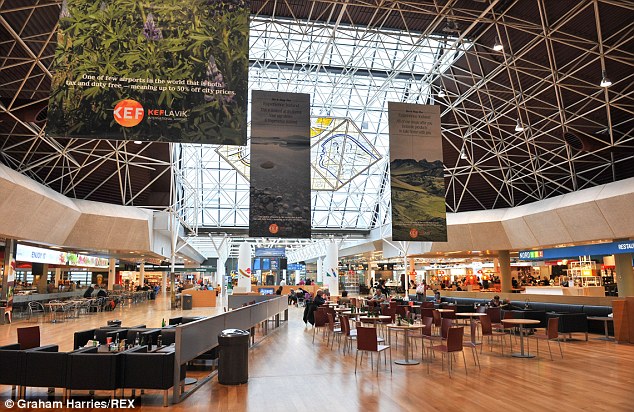
My trip from Los Angeles to Berlin went smoothly with a layover in Keflavik Interntional Airport. It is the cleanest airport in the world. It felt more like an igloo than an airport – snug from the elements. Yet it was a beehive of activity – with people snacking in one of several cozy cafes, or browsing the stores which naturally offer beautiful Icelandic sweaters and other products. The sandwiches are the most beautiful sandwiches I have ever seen. I was tempted to exchange $10 for Icelandic krona at the money exchange, but thriftiness got the better of me.
The gates are small- there is no waiting area. When it is time to board, you just queue up in front of the door leading to the gateway.
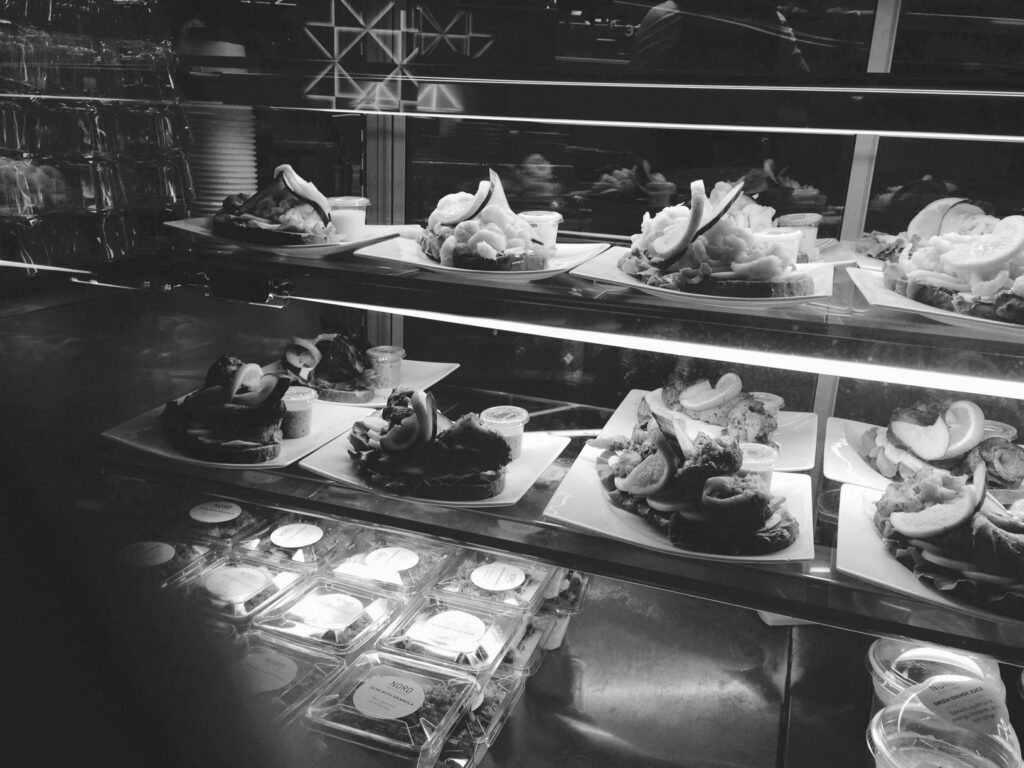
There were people sleeping here and there on the benches along the concourse, but it didn’t seem to disturb anyone. They were obviously tired travelers needing some shuteye during their layovers.
I finally arrived in Berlin Schoenefeld Airport near 11:30 am. I didn’t have to pass through customs – I guess that happened in Keflavik without me realizing it. It was all so painless.
Berlin Schoenefeld Airport is a relatively small airport, easy to navigate. Many people speak English. There are ATM machines in the lobby and it’s easy to buy a bus ticket or get a cab. Public transportation is abundant and everyone is very helpful.
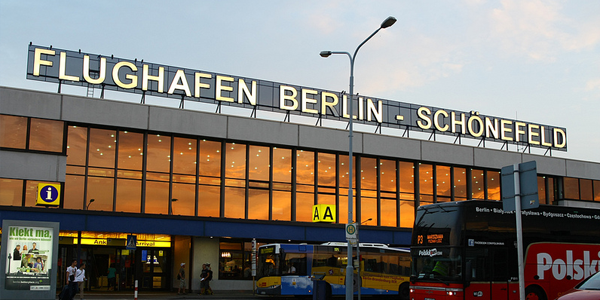
Berlin is an amazing city – so open and so easy to get around. Berlin’s BVG public transportation system is wonderful. You can get anywhere. In preparing for my trip, I chose to stay at the Best Western Steglitz because it is nested in a tangle of bus routes and near both S-Bahn (light rail) and an U-Bahn (subway) stops. There is a supermarket next to the hotel, and a small plaza in front surrounded by a number of cafes, restaurants, and bakeries. There is also a shopping mall and at least two banks across the street.

I arrived at my hotel at about 1:00. After I got settled in my room, I headed directly for the Bundesarchiv Lichterfeld– the branch of the German National Archives in Berlin. The Bundesarchiv is only a 15 minute bus ride on Bus 85 or Bus 285 (plus a 10 minute walk) from the hotel- or a 25 minute trip on the S1 with a transfer to Bus X11 bus that leaves you just about at the main gate.
The Bundesarchiv is divided into seven branches, each responsible for a different aspect of the preservation of documents, film, and photographs relating to German history. The branch in Lichterfeld is the repository for documents from the German Reich, the DDR (German Democratic Republic) and SAPMO (Foundation Archives of Parties and Mass Organisations of the GDR). It also holds 1.7 million books, newspapers and periodicals are kept here for research into recent German history.
I have been interested in visiting the Bundearchiv Lichterfeld because of my research into Gertrude Spiro, the woman who smuggled my friend Pnina from the Warsaw Ghetto in 1942. If you don’t know who Gertrude is by now, pleaae read the first couple of articles I have written about her.
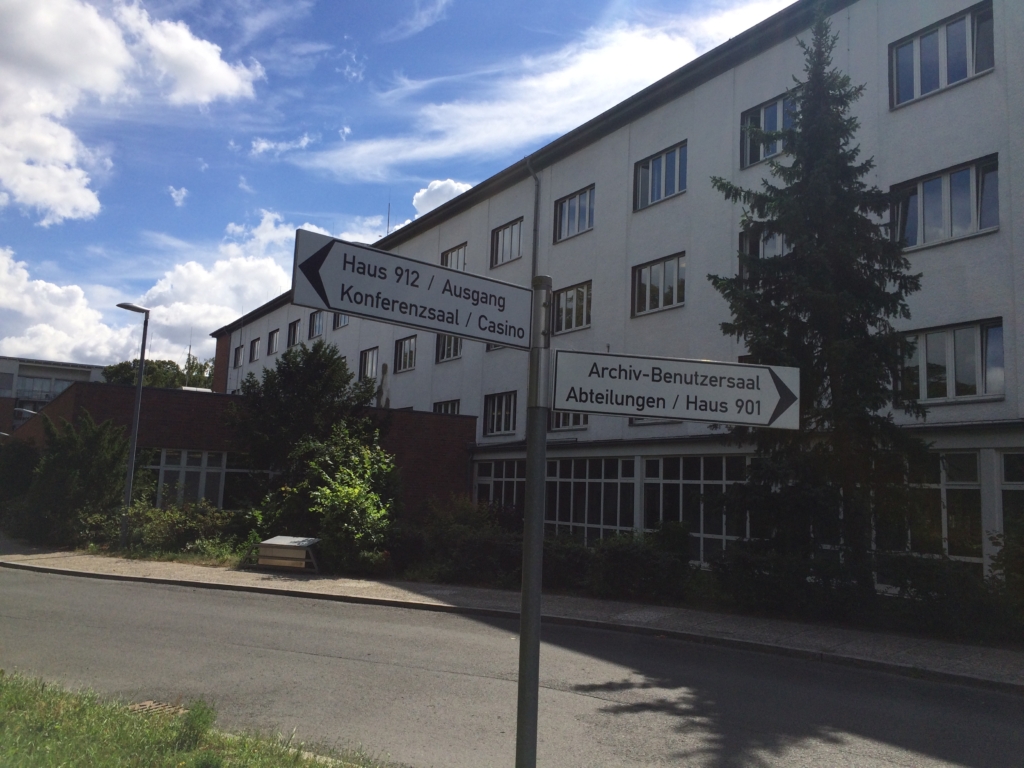
In getting set for my visit to the archives, I ordered files over several weeks before my arrival. Note that the Archives requires at least five days’ notice to retrieve files for you if you want them to be available when you arrive. After that, you can request them for the following day.
My initial contact was Herr Günter Wehner, the editor of the book Widerstand in Berlin gegen das Nazi Regime. Herr Wehner is a scholar of the German resistance during WWII, and visits the Archives three times a week. Over the last twenty years or so, has compiled an index of about 20k names and short biographies of members of the resistance in Berlin during the war. It was in those indexes that Cate Bloomquist discovered that Leo and Gertrude Spiro had been arrested in 1936 and put on trial for “preparing to commit treason”.

Herr Wehner was kind enough to contact the archives about the actual trial records- his book is mainly an index. He quickly came up with a list of possible records, but on further inquiry, he focused on only one record describing Gertrude and Leo’s indictment and sentencing. It was an amazing account of their activities during the period leading to and during their trial. They were actually in prison for 18 months before they were even sentenced. Other records were available, but as far as I could understand, they were part of an extensive transcript of the trial of the resistance leaders Margarete Kaufmann and Gustav Urbschat. The Archives obviously did not have the resources to comb the thousand-page transcript for mentions of the Spiros.
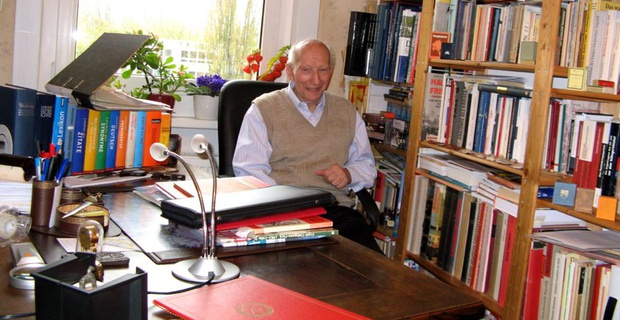
In preparing for my trip, I had placed a stream of requests for all the documents that were on Herr Wehner’s original list, plus several others pertaining to the Roehrs and Gerlachs. I wanted to make sure I would have a continuous supply of reading material available so I would not have to waste time waiting for a file to be pulled.
The archivists in the reading room seemed to be expecting me, as they had a large stack of folders waiting for me when I walked in. Unfortunately it only took me a few minutes to realize that most of them were not the files I had ordered.
There were a number of mistakes. For example, instead of files from signature R2018, they had pulled files from signature R2017. There were also two other files from RY55 on microfiche that had nothing to do with Gestapo indictments and sentencing, but rather with international bank loans made to Germany. These were on the original list, and had been discounted as being relevant, but the Archives wanted me to see them for myself. Considering two other references (R 58/3687, Blatt 112 and R 58/3688, Blatt 186) were so detailed – down to the “blatt” or page number- I was suspicious. Surely there must be something there that perhaps was badly referenced. It was only later that the mistake was corrected, and I was able to collect a list of resistance workers who had been indicted from 1936 that included Alfred Roehrs and his wife Martha Maria Priess.
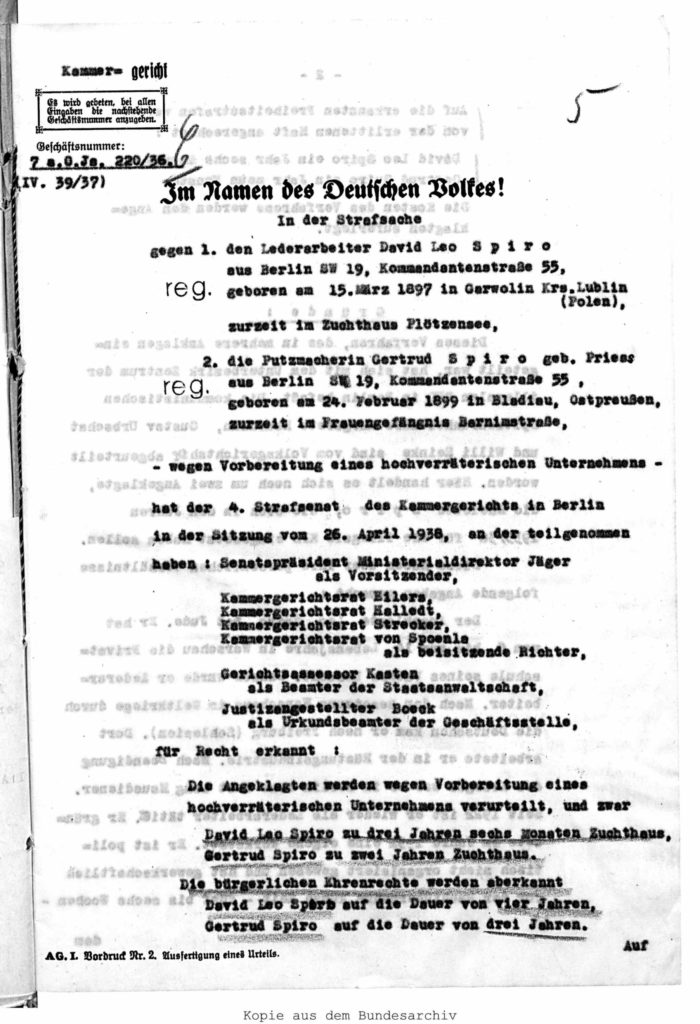
However there was one file that made up for all of the confusion – the original trial records of Leo and Gertrude Spiro. Herr Grunwald had sent me electronic copies weeks ago, but there was something so thrilling about actually holding the original fragile yellow pages in my own hands. They were probably typed by a Gestapo clerk in 1936 from some raw transcript – someone who had been at the trial, and perhaps had even seen Leo and Gertrude in person. Although this intermediate was unfortunately anonymous and present only through a piece of paper 80 years later, this was still one step closer to the pair themselves. Hopefully all this will lead to a known family member who can tell me about them from first-hand experience.

This brought the couple to life for me. When I saw a young man and woman holding hands in a cafe or with their heads together on the train, I imagine them as Gertrude and Leo during the better times of their lives, as newlyweds or as a young couple with their young daughter Sonia, perhaps proudly pushing her through the street in a baby carriage, showing her off to the neighbors. I looked at the apartment buildings I passed and thought – that’s where they could have lived. I could imagine the meetings described by the trial records having taken place in any of them. I could imagine the comings and goings of the cast of characters described in the records taking place in any of the entrance ways I passed on the street.
I would normally post a photograph of myself holding those trial records, but alas! –cameras and cell phones cannot be used in the research areas. You are also forbidden to use pens – everything must be in pencil. Everything except laptops, research notes, paper, and pencils must be stored in the lockers. On September 1, the Archives is going to start a program to allow visitors to photograph documents, but that was not possible during my visit.
Everyone at the Archives was very nice and tried to straighten the files out for me the best way they could. But Herr Grunwald, my point of contact, was on vacation, to return on Monday. The only new information I found on my first visit consisted of index cards with abstracted information about Gertrude and Leo’s imprisonment (the arrest cards of Association of Victims of the Nazi Regime, or Vereinigung der Verfolgten des Naziregimes, VVN-Haftkartei). I already had most of that already, but I still requested the Archives copy them for completeness. The Archives does not permit anyone to make copies of paper documents from their stacks. You must order them through Selke, their contractor. The copies will arrive typically within three to four weeks.
To be continued…
